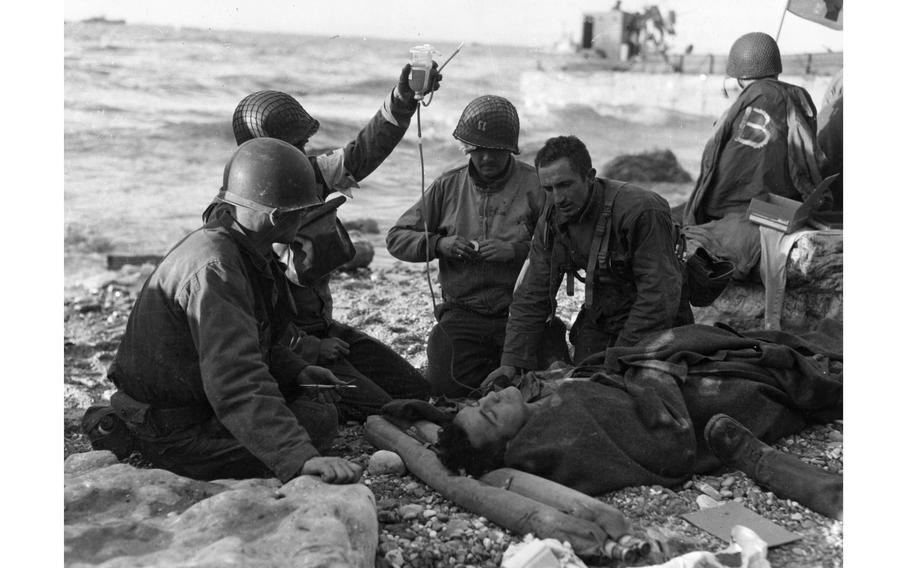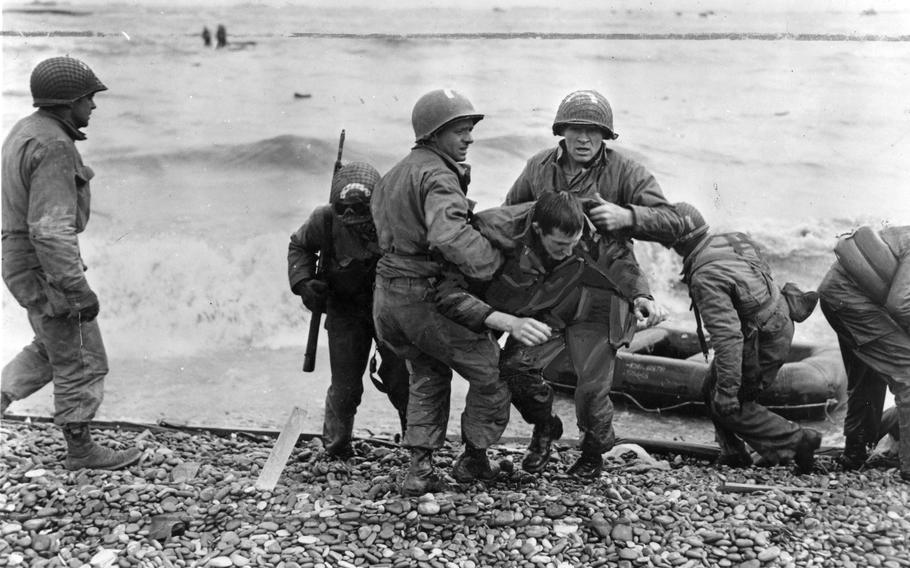
Nurses administer a plasma transfusion to a wounded survivor of a landing craft at “Fox Green” sector portion of Omaha Beach. The photograph shows how promptly medical treatment was administered on the beach. Note the inflatable life belt used as a pillow, and the feet of second prostrate man on (right). The flag on the far right is a flag of the Red Cross. The soldiers are from the 16th Infantry Regiment, 1st Infantry Division. The exact date of the image is unknown. Both June 6 (D-Day) and as June 12 are used. (Louis Weintraub/U.S. Army Signal Corps)
In the months and days leading up to the 80th Anniversary of D Day, Stars and Stripes will be republishing a number of articles, as reported by its staff writers at the time. This article first appeared in the Stars and Stripes London edition, June 12, 1944. It is republished unedited in its original form.
WITH ADVANCED HQ, FRANCE, June 9 (delayed) — The Medics went on the beach with the assault battalions and stayed there with them. While the Boche pinned everyone in khaki to a strip of sand and stone and poured open-sight 88mm fire onto them from the cliffs, a bunch of kids from West Virginia and Ohio crawled through tide-washed cuts in the sand and among those grotesque rows of dead to do their job.
There was one stretch which had turned red; four Nazi machine-gun emplacements had held their fire until the assault units were that far, then cut them down. One infantryman who had come through the Sicilian beaches without even a close call was hit in the shoulder. He was the only thing in the pile that moved or made a sound.

Medics from the U.S. 5th and 6th Engineer Special Brigade (ESB) help wounded soldiers on Omaha beach, Fox Green and Easy Red sectors. Survivors of sunken landing craft who reached the beach by using a life raft are recovered by other troops. (Louis Weintraub/U.S. Army Signal Corps)
The Medic heard him and watched him, but the machine-guns took their helmets off if they raised their heads.
Finally Bob Molinari, a Medic sergeant from Los Angeles couldn’t stand it any longer. “He crawled somehow — I don’t know how — up through the cross-fire,” said Capt. Walter Sielski, a Buffalo (N.Y.) doctor. “He went better than a hundred yards to reach the man, slung him underneath to cover the wounded man’s body, and then came through a hundred yards of the same fire.